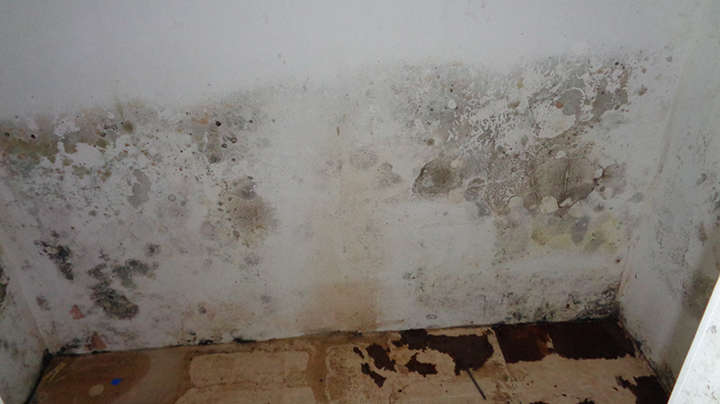
Standing water and wet materials are breeding grounds for microorganisms, such as viruses, bacteria, and mold. They can cause disease, trigger allergic reactions, and continue to damage materials long after the flood. Outlined below are suggested steps:
1. The key to mold control is moisture control. If mold is a problem in your home, you should clean up the mold promptly and fix the water problem. It is important to dry water-damaged areas and items that can be salvaged. All contaminated (wet) items that cannot be cleaned and dried completely should be removed and disposed of. The sooner mold is dealt with, the less chance it has to grow and spread.
2. Visible mold should be removed using water and detergent. Bleach will not kill mold to the roots except on impermeable surfaces. There are better ways to deal with mold (see steps below). Other home remedies like vinegar and peroxide are also not the preferred way to deal with mold issues.
3. While working on mold and in the vicinity of the mold, you should wear protective goggles, filtration masks (N-95), gloves, long sleeve shirts, long pants, and waterproof boots to prevent contact with the mold. When you are finished working, shower as soon as possible to prevent spreading mold spores.
4. Dry the structure. The most important part of mold removal and prevention is to control moisture. If there is a source of moisture (leak), it should be fixed at least temporarily as part of the drying process. If power is available air should be circulated to aid in drying. Please remember not to use generators indoors!
5. As the structure begins to dry, it is time to treat the area. The best way to kill mold and mildew is to treat areas with an EPA-registered mold and mildew disinfectant. These specially formulated disinfectants will kill mold spores at their roots, preventing them from reappearing over and over again. Through our experience, we have identified the following easily available and safe to use products:
a. Shockwave – this is the product we use in United Methodist Disaster Response on our spray trailers.
b. Concrobium – another product that kills mold to the roots
In both cases, the application inside the home is by spray to the previously wet areas. Masks, gloves, and protective suits (Tyvek) are advised during application. Following the application, you should leave the property for at least four hours. These products can also be applied in crawl spaces by using a misting device. These items can be purchased online and at home improvement stores.
6. Covering impacted areas with paint, wood, or other material does not prevent mold growth. It is important to give attention to the mold prior to rebuilding. Remember the key to controlling mold growth is moisture, so do not rush the drying process.
7. Both FEMA and Insurance Companies advise homeowners to take pictures prior to any repair work. You should also keep receipts for any out-of-pocket expenses. This will provide evidence to adjusters and assist you with any future claims.
Disclaimer: The information provided in this article is for educational and informational purposes only and should not be construed as legal advice. Please contact your insurance company for more information.
